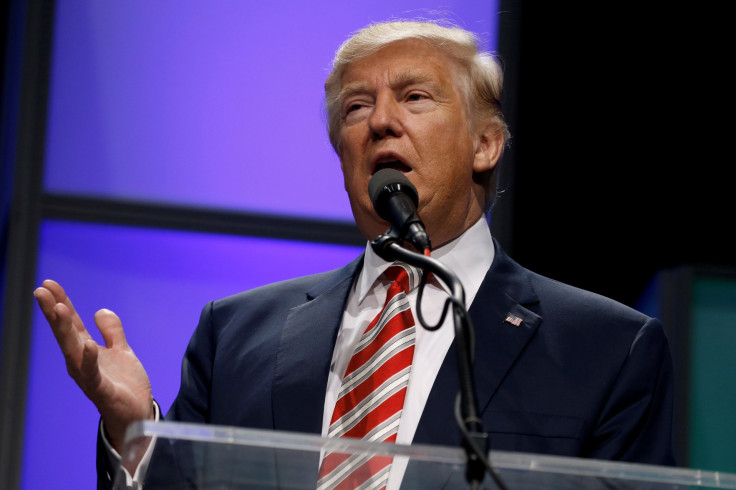What Will Trump Do To The Clean Power Plan? EPA Regulations Under Fire But The President-Elect May Have Difficulties

Behind podiums in West Virginia, before masses in Kentucky and in front of cameras broadcasting to the world from Pennsylvania, Donald Trump had a simple message for the men and women of coal country worried about their futures. You are not forgotten and coal will remain viable, he promised as he sought their support throughout 2016.
When it comes to the environment, Trump has promised he’ll do quite a few things on day one of his presidency, including ending the “war on coal” while directing places like the Environmental Protection Agency to identify “wasteful job-killing regulations” so that rules like the Clean Power Plan that seek to cut carbon dioxide emissions from coal power plants and the energy sector can be removed. Come Jan. 20, he’ll have his chance to make good on that promise.
The problem, environmentalists say, is that presidents don’t rule by fiat. Trump will certainly wield a considerable amount of power to pull back on environmental regulations, but instantaneously undoing the Clean Power Plan, established by President Barack Obama in 2015 to curb greenhouse gas emissions from power plants, isn’t likely. The progress made by the EPA and what are now-altered market trends stand in the way of the stroke of Trump’s presidential pen and the end of the Clean Power Plan.
“The most important thing the Clean Power Plan did is that it initiated,” a transition to clean energy solutions, John Coequyt, director of the federal and international climate campaign with the Sierra Club, told the International Business Times. “We believe that bell has been rung and it can’t be un-rung.”
The Clean Power Plan promises a net benefit to the economy of between $26 billion and $45 billion in saved health costs from things like healthier air and water alongside savings on climate change mitigation measures. The goal, finalized in 2015 by the Obama administration but held up in the courts since then, is to cut greenhouse gas emissions from power plants to 32 percent below 2005 levels by 2030. The rules are a part of a push by Obama to reduce greenhouse gas emissions, which are the main driver of global climate change and threaten wildlife species and communities across the globe.
The Clean Power Plan is awaiting a U.S. Appeals Court ruling after a legal challenge from West Virginia and 23 other states. That challenge has received the backing of the coal industry, which argues that the Clean Power Plan is an illegal reorganization of American energy grids that will lead to higher electric costs. The EPA argues the plan would actually lower energy costs for U.S. households.
While that legal battle plays out, environmentalists note that the energy economy appears to be headed toward meeting the Clean Power Plan goals. Carbon dioxide levels are already 21 percent below 2005 levels, according to the U.S. Energy Information Administration. That shift has been accompanied by just a slight increase in retail electricity prices, according to federal data.
A main driver of those reduced emissions is pure business: Cleaner energies including natural gas as well as solar and wind power are getting cheaper while coal is getting more expensive. There has been big investment in clean energy lately while coal power plants, which are old and retiring, are becoming so expensive that some plants are looking to get exemptions from property taxes to stay afloat.
Apart from those market changes, states like California are responding to the threat of climate change by implementing their own environmental protections that are in-line with the cuts needed to meet Clean Power Plan requirements. World leaders have also come together in recent years to agree on standards that could mitigate those threats.
Federal rules also present an obstacle for Trump. For government agencies like the EPA, established rulemaking processes exist that make swift action on regulations difficult if not impossible and the Trump administration would have to jump through those same hoops to get rid of the Clean Power Plan the Obama Administration jumped through to establish them. That process includes proposing a repeal of the rules, taking public comment, issuing a final repeal order and then finally facing challenges in court from dissenting groups.
“There’re laws that they have to abide by and that constraint exists partly because industry needs predictability and stability,” David Goldston, director of government affairs at the Natural Resources Defense Council, a non-profit environmental advocacy group, told IBT. “We would be fighting this at every step of the way with all the tools we have available because we do not think the public supports elimination of concrete climate actions.”
Jason Schwartz, a media officer with Greenpeace, another non-profit environmental group, stresses that in spite of the challenges facing the incoming administration, Trump still poses a significant risk to environmental causes and can deny the EPA money to operate.
“It is definitely a major concern,” Schwartz said. “He can greatly reduce, even if it doesn’t cancel the EPA — or whatever language he’s using — he can severely underfund it.”
© Copyright IBTimes 2024. All rights reserved.





















